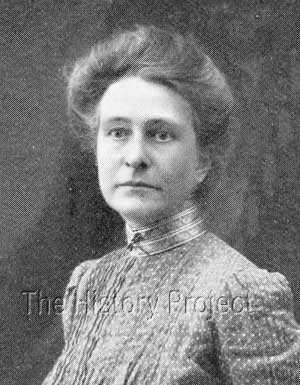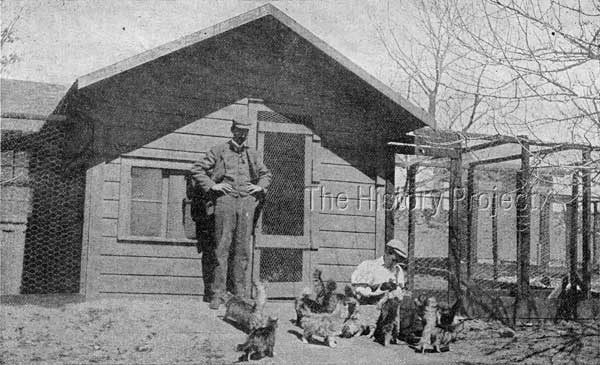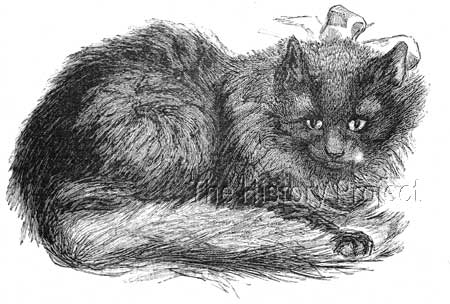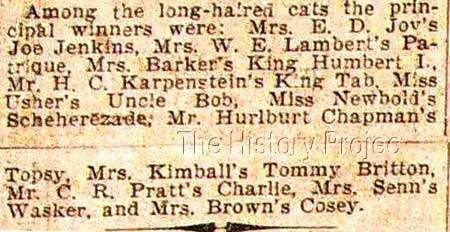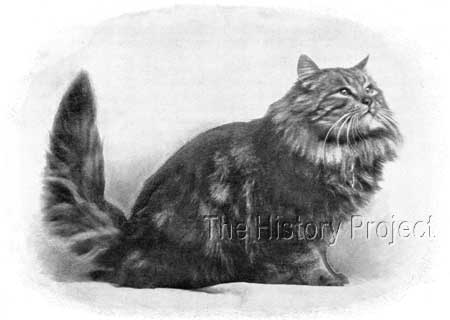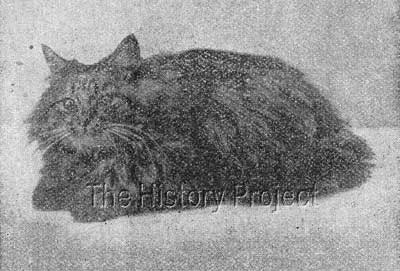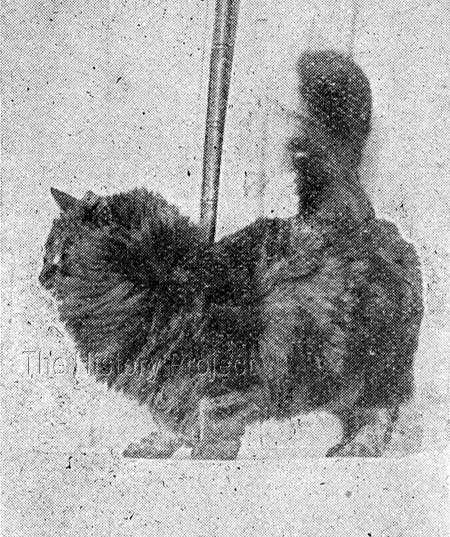 | |||||||||||||||||||









|
KING HUMBERT (1894)PHOTOS | SOCIAL MEDIA | REFERENCES
HISTORICAL BACKGROUND:While in the United Kingdom, firstly 'Birkdale Ruffie' (born in March 1890) and then 'Ch. Persimmon' (born in June 1897) may have been the flagbearers for brown tabbies in England, another English born brown tabby male, made a substantial impact on the early American show and breeding scene. This was 'King Humbert', BCC:106, who was born in 1894. 'King Humbert' was one of a large number of English imported cats that helped to establish an early reputation of the superiority of English stock over local lines, when the fancy in the United States was still in its infancy. This pre-eminence lasted for approximately 50 to 60 years, but by not long after the end of the Second World War, many American fanciers could boast locally bred stock that was by then equal to, if not better, than the cats being produced in the United Kingdom. Nevertheless, England was the cradle of both the Cat Fancy, and the primary source of the originating gene pool of cat breeds, that were exported to all corners of the globe. Many fine English cats were still being regularly exported to supplement gene pools in Australia, New Zealand, Canada, the United States, Europe and South Africa as late as the 1980's, more than 110 years after the first Crystal Palace Cat Show. 'King Humbert' has the distinction of having made his USA show debut at Newburgh Show in 1895, followed by an appearance at the second Madison Square Garden Show in New York, in 1896 PARENTAGE & OWNERSHIP:
Tiger, Brown Tabby
Tauric, Brown Tabby
| Unknown
King Humbert, Apr-1894, Brown Tabby, M
| unknown
Tootles, Brown Tabby
Eng Ch Holmwood Trixie, Blue
'King Humbert' appears in the Register of the Beresford Cat Club, first in Volume 1, BCC:106, where we find his date of birth given as April, 1894; and parentage recorded as Sire: 'Tauric' (by Tiger* NCC:1435) and his dam listed as 'Tootles'. His owner of record then is Mrs. E. N. Barker, of Seranton, Pennsylvania. He then appears a second time in the 're-entries' in Vol.2, this time with his dam 'Tootles' listed with her sire as unknown, but her dam as 'ex Trixie', intimating that this is the famous 'Holmwood Trixie'. This becomes more important, when we look at how, and to whom he was subsequently bred.
But we also find from this second entry, that he was imported in April 1895, from Mr. A. Clarke, of Pevensey Bay, Sussex, England. This is more than likely to have been Mr. A.A. Clarke, founding treasurer of the National Cat Club, whose addresses have also been given as the 'Langham Hotel, Hastings' and the 'Royston Arms, Cambridge'. Mr. Clarke was well known for his whites and his brown tabbies from a very early period. It is also notable and probably relevant, that 'Tiger', NCC:1435, who appears in the original listing as a grandsire of 'King Humbert', owned by Mrs. Cunliffe Lee, was previously owned by Mrs. Clarke. The adjoining photograph is that of Mrs. E.N. Barker, who is summarily described in The Book of The Cat(1903) as "one of the pioneers of the American Cat Fancy"1. She was in fact, on the Executive Board of the American Cat Association, representing New York. From all accounts, it appears possible that she had a property in England, as well as the United States, as although a resident of Newburgh, New York, she is known to have bred the chinchilla 'The Blessed Damosel' who is stated to have been bred by her in England and was sired by 'Lord Southampton' who was resident in England. We also find a Mrs. E.N. Barker in the CCR, with a residence at Carleton Rectory, Skipton. That she was active in importing cats from England is supported by the historical records, among them being 'King Humbert' and his mate 'Topaz'. Mrs. Barker's considerable influence on the American fancy , through her cats, is put into a clearer context by the following quotation, also from The Book of The Cat: "….but probably the most far-reaching of the families that win in all colours is the 'Humbert' strain, which emanates from Mrs. Barker's 'King Humbert', imported in 1895. Not only did this cat sire a lot of winners himself, but cats with the 'Humbert' blood to the third and fourth generation, such as 'Prince of Orange' etc., are still winning all over the country…. "One cat - 'The Blessed Damozel', bred by Mrs. Barker in England, and by Champion Lord Southampton' ex 'Peggy', by 'Champion Silver Mist' is making a big reputation through her children, and the generation is now beginning to win as did the first. This blood is very successful wherever found, and this is, no doubt, largely owing to the kittens by 'King of the Silvers', through 'The Passionate Pilgrim' who goes back through his sire to 'Whychwood, is as good as anything Mrs. Barker has yet produced; and this is saying a good deal, for she has bred a great many winners in many colours, and the effect of cats imported or bred by her is seen at every show we go to, and the ramifications of blood lines spread over America would make a book in itself."1
In the U.S. Register and Studbook for Cats (1906), we find an entry for a daughter of 'King Humbert', a brown tabby named 'Sapphire', USR: 154. This same cat is also found in the records of the Beresford Cat Club, BCC:115. In both, her dam is imported and is named 'Topaz', with the parentage of 'Topaz' given as sired by 'Turco', NCC:1183, and out of 'Trixie', NCC:1268. 'Trixie' is the key here. And this is 'Champion Holmwood Trixie', bred by Mrs. Foote and owned by Miss G.E. Jay. 'Trixie' was born in September 1892 and her great claim to fame is as the primary winner of the Crystal Palace Cat Show in October 1893, where she carried off eight prizes, including the Gold Medal, two Silver Medals, First Prize in her class, and Four other Specials! In the Beresford Cat Club entry for 'King Humbert' it is intimated that 'Tauric', the sire of 'King Humbert', is out of 'Trixie' and as we know, he was a Brown Tabby and 'Trixie' was a solid Blue, therefore to produce him, she had to have been bred to a Brown Tabby. But, in the Re-entry in Volume 2, this is 'corrected', with 'King Humbert's' dam 'Tootles' being shown as a daughter of 'Trixie' by an unknown sire, and with no reference to 'Trixie' behind his sire. It is the writers belief that this 're-entry' is the correct parentage, and my reasons will be given in due course. But essentially the critical point here is that 'Champion Holmwood Trixie' was the grand-dam of 'King Humbert'.
SIBLINGS & SHOWS:There are no full siblings of record. As for Shows, 'King Humbert' did himself proud on American shores! He gained a first at Newburgh, plus the Special for Best Long-hair Cat in Show in 1895. At the historic Madison Square Garden Show in New York, in 1896, he gained a 1st and Special for Best Long-hair Male, achieving this outstanding win against the previous year's big winner, Mrs. Fred Brown's tabby Maine Coon female, 'Cosey'.
That these early wins by an imported Tabby Persian caused a sensation is verified by Frances Simpson in her chapter on Brown Tabbies, in which she states: "The most famous brown tabby, however, over the herring pond was Mr. E.N. Barker's 'King Humbert'. This cat arrived in America in (sic) 1885 (1895), and made a considerable stir in catty circles. Mr. Barker is said to have refused a thousand dollars for him from a New York millionaire. I remember when Mr. Barker was over, acting a judge at the Westminster Cat show, he sought, but did not find anything to beat his noted brown tabby now gone to his last home."1 BREEDING & PROGENY:With regard to the progeny of 'King Humbert' we can begin with a quotation direct from his owner, Mr. Barker: "As regards brown tabbies in America, 'King Humbert' and his children have always held their own. 'Humbert' was bred in England, and as he is now dead I may be allowed to say that when fit and in good condition a better coloured and smarter show cat never stood in a pen or outside, and he loved to show himself off. The best kitten bred from him was 'Jasper'. He was very short in leg, and quite lost in coat, his feet being hardly visible. "To the readers of that very excellent American publication, 'The Cat Journal', the handsome portrait of 'Crystal', the brown tabby, is very familiar. The editor, Mr. C.H. Jones, writes to me:- 'I am sending you some pictures as promised. The large photo is 'Champion Crystal,' son of 'Humbert,' a beautiful cat as to type and disposition. A peculiar thing about 'Crystal's' kittens is that they do not show very long hair till they are several months old.'" ¹ And from an article entitled 'High-Bred Cats in America', by Helen Winslow, published 1st August, 1897, three years prior to her book 'Concerning Cats' we have this illuminating description of 'King Humbert's' many qualities; his coat, his ability as a sire, his kittens and his amazing temperament:-
"At Newburg-on-the-Hudson there is quite a colony of Persian cats, owned by Mrs. E.Barker, who has made a careful study of their training and ways. Her King Humbert is a very famous cat, and known by cat-fanciers all over the country and in England. One thousand dollars was refused for him at the first Madison Square Garden show, and he has won several first prizes since that time. The first year he came to maturity he was father to thirteen kittens, and these took seven first prizes, eight second, three third, and some specials, not one having been passed by without some honor in the shows where they were exhibited. King Humbert is a rich brown tabby, with a coat as sleek and shiny as a fine silk hat. He has a grand carriage, and struts about the Madison Square Garden and other exhibition halls as if he owned them. He is intensely affectionate, and is friendly to old and young. Like many other cats, he regards the camera with some suspicion, and it has been difficult to get a satisfactory picture of him, the one shown having been caught while he was out in a gale of wind. "Jasper is a son of King Humbert and bids fair to be as famous. Mrs. Barker, who is an authority on cats, says: 'I fear the long-haired cat has been grossly slandered in regard to amiability and disposition. I find they are not unlike ourselves and our children; they will follow a good example or the reverse. With a gentle well-bred mistress pussy's manners are self-controlled and she is devotion herself. Such animals never need to be handled 'with leather gloves'. Indeed, a cat which requires such management reflects 'shame' upon her mistress. In my large kennel of long-haired cats I have never had one that a stranger might not pick up with impunity, meeting with politeness from the most reserved, while from a few there would be no end of insinuating advances. King Humbert, the head of my flock, will, if allowed, put his plushy paws quite aroundone's neck, rub his head lovingly against one's face, and purr out his most fascinating Persian compliments in a very courteous fashion."2 And now we return to 'King Humbert's' grand-dam 'Ch. Holmwood Trixie'. In the U.S. Stud-book and Register for Cats (1906) we find 'Sapphire'(USR:154)(BCC:115) as a daughter of 'King Humbert' and 'Topaz'. 'Topaz' (a Blue Persian), although not listed independently herself, is shown in both registers as a daughter of 'Turco' (a Blue) and 'Ch.Trixie' (also a blue). 'Sapphire' was bred by Mrs. Barker, and in the USR her dam is noted as 'Imported'. From this we must deduce that Mrs. Barker imported 'Topaz' direct from Miss Jay. An analysis of the progeny of 'Trixie' and their subsequent dates of birth, shows that the only year possible in which a breeding between 'Turco' and 'Trixie' could possibly have taken place, is 1893, in a first and unrecorded litter from 'Trixie'. Later in the year,she was exhibited successfully and in subsequent litters born in 1894, 1895, and 1896, we can account for many registered progeny. So if we accept the clearly recorded breeding of 'Turco' to 'Trixie', we must likewise eliminate any possibility of 'Trixie' being bred to any brown tabby in this early period of her life, and therefore her inclusion as a possible grandparent to 'King Humbert' via his sire as in (BCC:106) is erroneous. It was a simple mistake, corrected in the re-entry in Volume 2. But, the reason we get this right, is somewhat obvious. When Mrs. Barker bred her imported blue female 'Topaz' to 'King Humbert' she was putting auntie to nephew, doubling directly and purposefully on 'Ch. Holmwood Trixie'. This is very likely to have been the sole purpose behind importing 'Topaz' in the first instance. From this breeding, in a litter born 15th June, 1895, came both the brown tabby female 'Sapphire',(BCC:115)(USR:154) and her litter brother, 'Champion Crystal' (aka as Crystal Ch. Crystal)(BCC: 154). 'Sapphire' was originally retained by Mrs. Barker, but later sold to Miss Anna Hazleton, of Milwaukee, Wisconsin. 'Champion Crystal' found his way to Mr. C.H. Jones, of Palmyra, New York.
Both 'Sapphire' and 'Crystal' were successful on the Show bench. Her wins included 3rd at New York, 1896; 3rd at Plainfield, 1896; 2nd at Toronto, 1896; 1st and Special, Milwaukee, 1898; and later a Special at Chicago in 1901. 'Crystal' won, 1st and Special at Newburgh, New York; and 1st and 2 Specials at the Beresford Cat Club Show in Chicago in 1900. He is also the recorded sire 'Crystal Goozie'(BCC:150), a brown tabby female; 'Crystal Kelpie' (BCC:151), a brown tabby and white female; and 'Crystal Kipie' (BCC:153) a brown tabby and white female, all born 16th February 1899, out of 'Mona Lisa' (BCC:152) a brown tabby and white queen. Helen Winslow, in Concerning Cats (1900), elaborates: "The most beautiful collection of brown tabbies is owned by Mr.C.H. Jones, of Palmyra, N.Y., who has the 'Crystal Cattery'. 'Crystal', the son of Mrs. E.N. Barker's 'King Humbert', is the champion brown tabby cat of America, and is a magnificent creature, of excellent disposition and greatly admired by cat fanciers everywhere. Mona Liza, his mate, and Goozie and Bubbles make up as handsome a quartet of this variety as one could wish to see. Goozie's tail is now over twelve inches in circumference. Mr. Jones keeps about twenty fine cats in stock all the time."9
Another son of 'King Humbert' who is not found in the Registers, nor in any database to date, is 'Jasper'. His dam in not known, but that he was a prize-winning son of 'King Humbert' is recorded in the article on "High-bred Cats in America" by Helen Winslow, published in Iroquois Magazine, 1st August, 1897; in which the author simply affirms:- "Jasper is a son of King Humbert and bids fair to be as famous."2 The above, rather poor photograph of 'Jasper' accompanies the article, and shows an as yet immature male of good type, suggestive of the possibility that he may have been born in 1896, and only beginning to come into his own when the article was written. Yet another son, is only known by virtue of the registration of his own daughter. 'Lady Baskerville' (BCC:786), who was a brown tabby and white female. Her sire, was 'Mooneyes', who is listed as from 'King Humbert' ex 'The Banshee'.3 PHOTOS:
The above is a very rare photograph of 'King Humbert', in an article written by Helen Winslow, that appeared in Iroquois Magazine, 1st August, 1897. In it she quotes Mrs. Barker, who informs us of the difficulty in getting a photograph of 'King Humbert':- "Like many other cats, he regards the camera with some suspicion, and it has been difficult to get a satisfactory picture of him, the one shown having been caught while he was out in a gale of wind!"2 SOCIAL MEDIA :None currently available. In Summary: There can be little doubt that 'King Humbert' was a pioneering English Persian stud male, who made a considerable mark in short order, on the emerging American Cat Fancy. His own reputation and that of his very experienced breeder Mrs. E.N. Barker, helped to cement his fame, ensuring that his progeny continued to carry his name and fame forward into succeeding generations. But it was his type, and in particular his body type, which was short, low on leg and compact, that resonates with us to this day, as it is this which embodies the Persian physicality, now so respected in all truly notable show specimens within the Persian breed divisions. It was this that helped to separate the Angora and the Maine cat from the Persian, by way of body structure. And so also, do we see the soft, trusting and tender affectionate nature of the Persian emulated in his character and temperament and when we listen to Mrs. Barker's description of his gentle and loving ways, we are reminded why we ourselves were so drawn to the Persian cat as a pet which can be trusted, adored and enjoyed. In this respect, both 'King Max' and 'King Humbert' were self-appointed ambassadors for the breed in the late 1890's, helping to secure for the Persian, a unique and respected place of honor in the hearts of cat fanciers, as a new century dawned. REFERENCES:
Registers associated with this article include The Incorporated Cat Fanciers Association of Great Britain (TICFAGB), National Cat Club (NCC), The Cat Club (CCR), Beresford Cat Club (BCC), Feline Federation Francaise (FFF), Siamese Cat Registry (SCR), US Register & Studbook for Cats (USR)including Supplement(USRS), The Studbook of the American Cat Association (ACA), and the Studbook & Register of the Cat Fanciers' Association (CFA).
|
||||||||||||||||||
Home | Cats | Gallery | Clubs | People | Artifacts | Articles | Updates | Contact Us ©The CFA Foundation, Inc and The Harrison Weir Collection
|
|||||||||||||||||||
